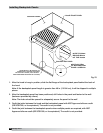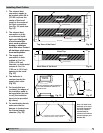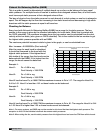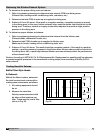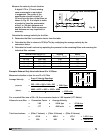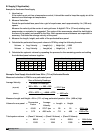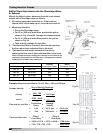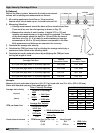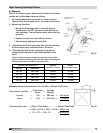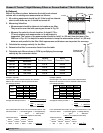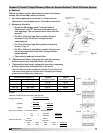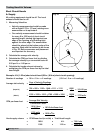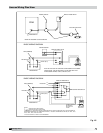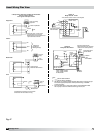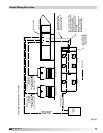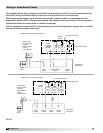
23
Canopy Hood
®
1/2 width
1/2 height
Fig. 38
Nominal Filter Size (H x L)
Imperial
Conversion Factor
Metric
Conversion Factor
Inches Millimeters
16 x 16 400 x 400
1.22
ft
2
.113 m
2
16 x 20 400 x 500
1.67
ft
2
.155 m
2
20 x 16 500 x 400
1.21
ft
2
.112 m
2
20 x 20 500 x 500
1.50
ft
2
.139 m
2
High Velocity Cartridge Filters
A. Exhaust
With all the filters in place, determine the total hood exhaust
volume with a Shortridge meter as follows:
1. All cooking equipment should be on. If the hood has
internal short circuit make-up air, it should be turned off.
2. Measuring Velocities
• SetuptheShortridgemeter.Leaveallholesof
Velgrid open. Do NOT tape over holes that are not
over openings. The conversion factor takes this into
account.
• Positionthegridovereachfilterasshown.
• Takevelocityreadingsforeachfilter.
3. *Calculate each filter’s volumetric flow rate by summing
the flow rate of each individual filter in the hood.
4. *Calculate the total hood’s volumetric flow rate by
summing the flow rate of each individual filter in the
hood.
*Note: For best accuracy multiply the velocity of each filter
by its conversion factor and sum the flow rates. Averaging the
velocity measured for all filters may cause error.
Fig. 37
Total hood flow rate = (Filter 1 Flow Rate) + … + (Filter X Flow Rate)
=
423.0 + 421.8 + 420.7 + 418.2 = 1683.7 cfm
Flow rate for one filter =
Conversion
Factor
x
Average
Velocity
(Imperial)
= 1.50 x 282 fpm = 423.0 cfm
(Metric)
= .139 x 5157 m/hr = 717 m
3
/hr
Example: Measured velocities for 20 x 20 filter = 282 fpm (5157 m/hr)
=
717 + 717 + 715 + 711 = 2860 m
3
/hr



